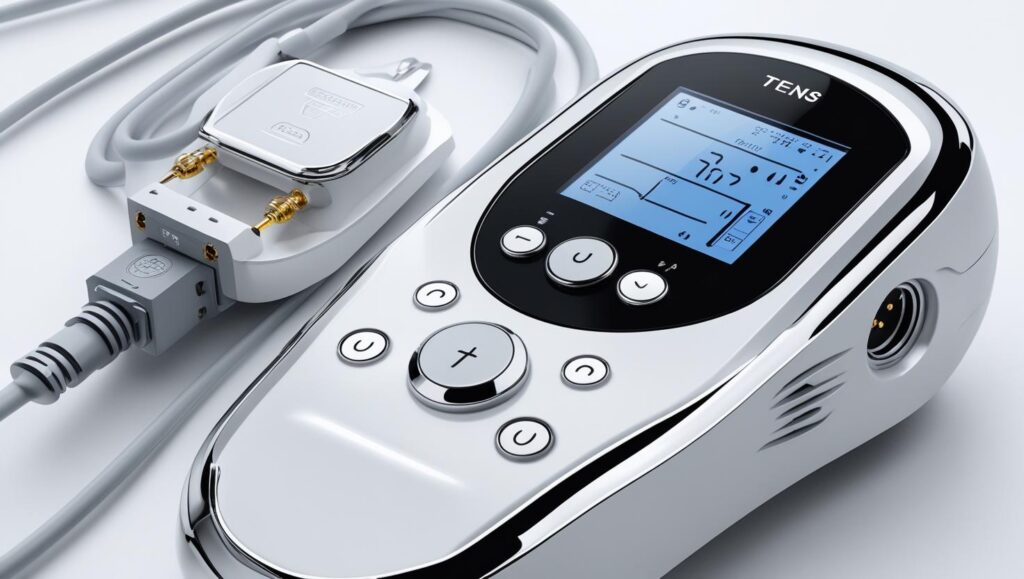
Transcutaneous Electrical Muscle Stimulation (TEMS)
1. Introduction to Transcutaneous Electrical Muscle Stimulation (TEMS)
Transcutaneous Electrical Muscle Stimulation (TEMS) is a non-invasive therapeutic modality that uses electrical currents to stimulate muscle contractions. It is widely used in rehabilitation, sports medicine, and pain management to improve muscle strength, prevent atrophy, enhance blood circulation, and reduce pain.
TEMS differs from TENS (Transcutaneous Electrical Nerve Stimulation), which primarily targets nerves for pain relief, whereas TEMS directly stimulates muscles to induce contractions.
2. Mechanism of Action
TEMS works by delivering controlled electrical impulses through electrodes placed on the skin over target muscles. These impulses mimic the body’s natural neuromuscular signals, causing depolarization of motor neurons and subsequent muscle contraction.
Key physiological effects include:
- Muscle strengthening (via repeated contractions)
- Improved blood flow (due to muscle pumping action)
- Reduction of muscle spasms
- Prevention of disuse atrophy (in immobilized patients)
- Enhanced motor relearning (in neurological rehabilitation)
3. Clinical Uses of TEMS
TEMS is used in various medical and therapeutic settings, including:
A. Rehabilitation & Physical Therapy
- Post-surgical muscle recovery (e.g., ACL reconstruction, joint replacements)
- Stroke rehabilitation (reducing spasticity, improving motor control)
- Spinal cord injury (maintaining muscle tone)
- Peripheral neuropathy (preventing muscle wasting)
B. Sports Medicine & Athletic Performance
- Muscle conditioning and strengthening
- Recovery from sports injuries
- Delayed onset muscle soreness (DOMS) management
C. Pain Management
- Chronic musculoskeletal pain (e.g., low back pain, osteoarthritis)
- Myofascial pain syndrome
D. Aesthetic & Wellness Applications
- Muscle toning (e.g., abdominal, gluteal stimulation)
- Improved lymphatic drainage (in combination with massage)
4. Modalities and Parameters
TEMS devices allow customization of stimulation parameters based on therapeutic goals:
| Parameter | Range | Therapeutic Effect |
|---|---|---|
| Frequency (Hz) | 1-150 Hz | Low (1-10 Hz): Muscle endurance, relaxation Medium (20-50 Hz): Strength & hypertrophy High (50-150 Hz): Fast-twitch fiber activation |
| Pulse Width (µs) | 100-400 µs | Wider pulses = stronger contractions |
| Amplitude (mA) | Adjustable (0-100 mA) | Determines contraction intensity |
| Duty Cycle | 1:1 to 1:5 (ON:OFF) | Prevents muscle fatigue |
Common TEMS Waveforms:
- Russian Stimulation (2.5 kHz modulated at 50 Hz) – Used for muscle strengthening.
- Biphasic Pulsed Current – Balanced, comfortable, reduces skin irritation.
- Interferential Current (IFC) – Deeper penetration, used for pain and edema.
5. Frequency (Hertz) Models and Treatment Outcomes
A. Low-Frequency TEMS (1-10 Hz)
- Effects:
- Slow-twitch muscle fiber activation
- Endurance training
- Relaxation of spasms
- Improved circulation (via rhythmic contractions)
- Applications:
- Post-stroke rehabilitation
- Muscle re-education
- Chronic pain management
B. Medium-Frequency TEMS (20-50 Hz)
- Effects:
- Balanced strength and endurance
- Hypertrophy (muscle growth)
- Moderate pain relief
- Applications:
- Athletic training
- Post-surgical recovery
C. High-Frequency TEMS (50-150 Hz)
- Effects:
- Fast-twitch fiber recruitment
- High-intensity muscle contractions
- Short-term strength gains
- Applications:
- Sprint training
- Explosive power development
6. Treatment Protocols and Timing
| Condition | Frequency (Hz) | Duration | Electrode Placement |
|---|---|---|---|
| Muscle Strengthening | 30-50 Hz | 15-20 min | Over muscle belly |
| Pain Relief | 2-10 Hz | 20-30 min | Near pain site |
| Atrophy Prevention | 20-35 Hz | 10-15 min | Along muscle length |
| Neuromuscular Re-education | 10-20 Hz | 10-15 min | Over motor points |
General Guidelines:
- Acute Injuries: Lower frequency (5-15 Hz), shorter sessions (10-15 min).
- Chronic Conditions: Higher frequency (20-50 Hz), longer sessions (20-30 min).
- Athletic Performance: Burst mode (50-100 Hz), intermittent contractions.
7. Expected Treatment Outcomes
- Muscle Strength: 20-40% improvement in 4-6 weeks (with consistent use).
- Pain Reduction: 30-60% decrease in chronic pain (when combined with therapy).
- Recovery Time: Faster return to function post-injury (by 15-30%).
- Atrophy Prevention: Maintains 80-90% of muscle mass in immobilized limbs.
8. Contraindications and Precautions
Avoid TEMS in:
- Pacemaker users
- Pregnancy (abdominal placement)
- Deep vein thrombosis (DVT)
- Epilepsy (high-frequency stimulation)
- Open wounds or infections
Side Effects:
- Skin irritation (due to electrode gel allergy)
- Muscle soreness (if intensity is too high)
9. Best Places for TEMS in Bangalore (Including iListen)
1. iListen Clinic
- Location: Multiple branches in Bangalore
- Specialty: Advanced neuro-rehabilitation & sports therapy
- TEMS Features: Customized protocols, Russian stimulation, IFC
2. PhysioActive
- Focus: Sports injuries & post-surgical rehab
3. AktivHealth
- Specialization: Chronic pain & musculoskeletal disorders
4. CureNow Wellness
- Highlights: Neurological & orthopedic TEMS applications
10. Conclusion
TEMS is a versatile, evidence-based modality for muscle rehabilitation, pain relief, and performance enhancement. By selecting the right frequency, pulse width, and treatment duration, optimal outcomes can be achieved. In Bangalore, clinics like iListen, PhysioActive, and AktivHealth offer high-quality TEMS therapy with expert supervision.